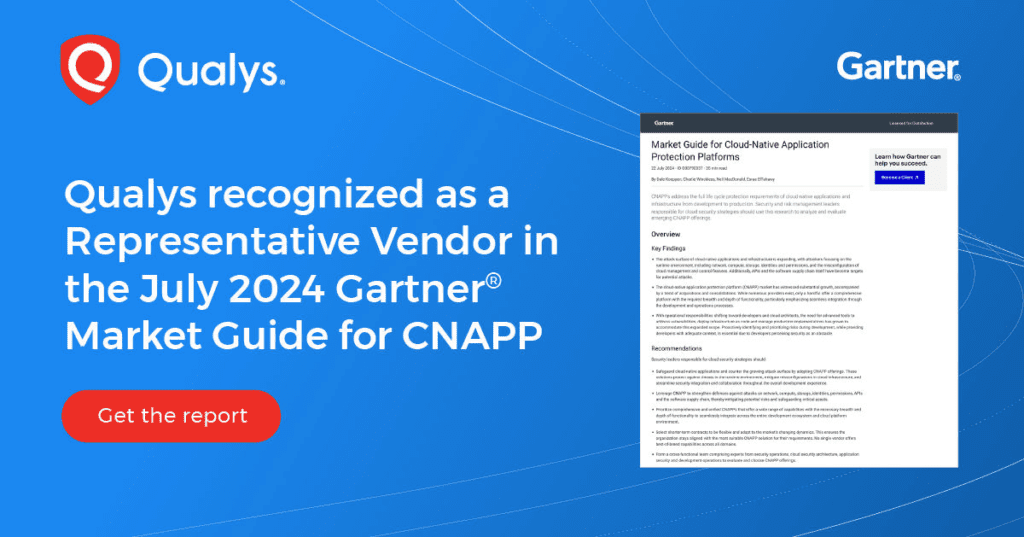Are your cloud-native applications and multi-cloud infrastructure adequately protected against evolving threats? How confident are you in your current security measures for cloud workloads and containerized environments?
Gartner's Market Guide for Cloud Native Application Protection Platforms (CNAPP) delves into these important issues, providing valuable insights into challenges and solutions in the cloud security landscape. CNAPPs have emerged as a comprehensive approach to address these challenges by bringing together multiple security capabilities into a unified platform. Let's explore some of the key takeaways from Gartner's Market Guide and what they mean for organizations looking to improve their cloud security posture.
Get your free copy of Gartner's Cloud Native Application Protection Platform (CNAPP) 2024 marketing guide.
The rise in cloud-native applications is leading to an increase in CNAPP deployments
Cloud-native application protection platforms represent a major shift in how organizations approach cloud security. Cloud Application Protection Platform (CNAPP) is a comprehensive cloud security solution that integrates the capabilities of various tools, including Cloud Security Posture Management (CSPM), Cloud Workload Protection Platform (CWPP), and Kubernetes Security Posture Management (KSPM). , and Cloud Infrastructure Entitlements Management (CIEM), in one unified platform. CNAPPs secure cloud infrastructure and applications across all lifecycle stages, reducing operational complexity, providing better risk identification with end-to-end visibility, and enhancing collaboration between previously siled teams such as developers, DevOps, and security. This combination addresses the increasing complexity of cloud environments and the need for a simpler approach to security. By combining multiple security capabilities, CNAPPs provide organizations with a more efficient and effective way to manage their cloud security risks.
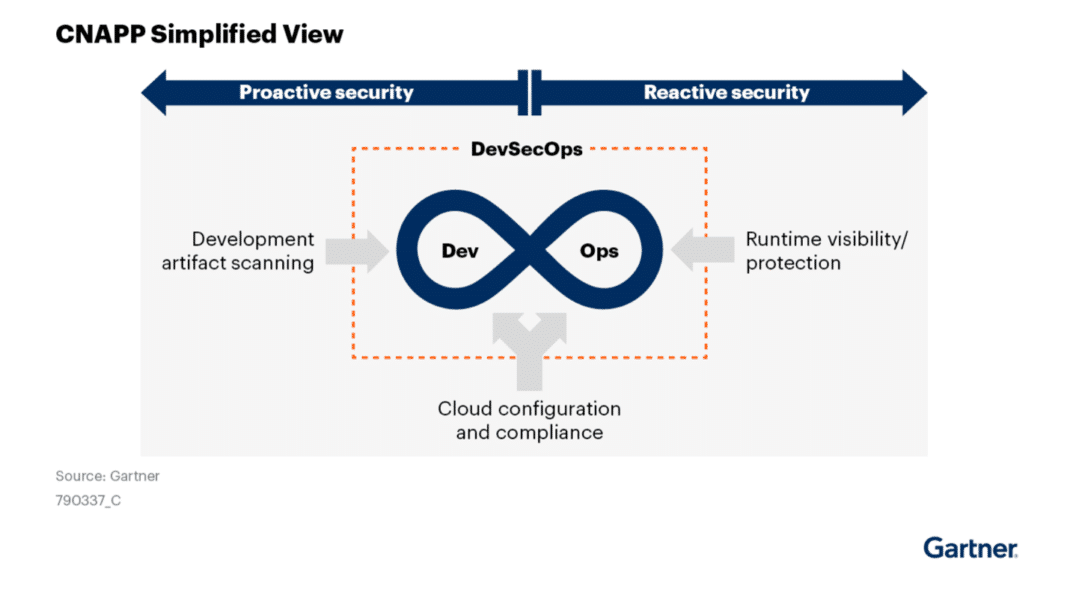
Driving factors behind CNAPP adoption
The Gartner report includes three strategic planning assumptions behind the growing adoption of CNAPP solutions:
By 2029, 60% of organizations that do not deploy a unified CNAPP solution within their cloud architecture will lack broad visibility into the cloud attack surface and will therefore fail to achieve their desired Zero Trust goals. By 2029, more than 80% of organizations will adopt a centralized approach to platform architecture and operations to facilitate self-service and scale DevOps, compared to less than 30% in 2023. By 2029, 35% of all enterprise applications will run in containers, up from less From 15% in 2023.
CNAPPs are essential for breaking down organizational silos and building on the promise of DevSecOps
CNAPPs remove silos between application development, cloud engineering, and security operations teams by providing a centralized platform. This integration enhances communication and risk identification throughout the development life cycle. Real-time insights into workloads and effective vulnerability management are provided by Cloud Native Application Protection Platforms (CNAPPs), which provide a comprehensive assessment of different components and characteristics within application and cloud environments. They place a strong emphasis on empowering developers to take responsibility for application risks, ensuring that security is an integral part of the development process.
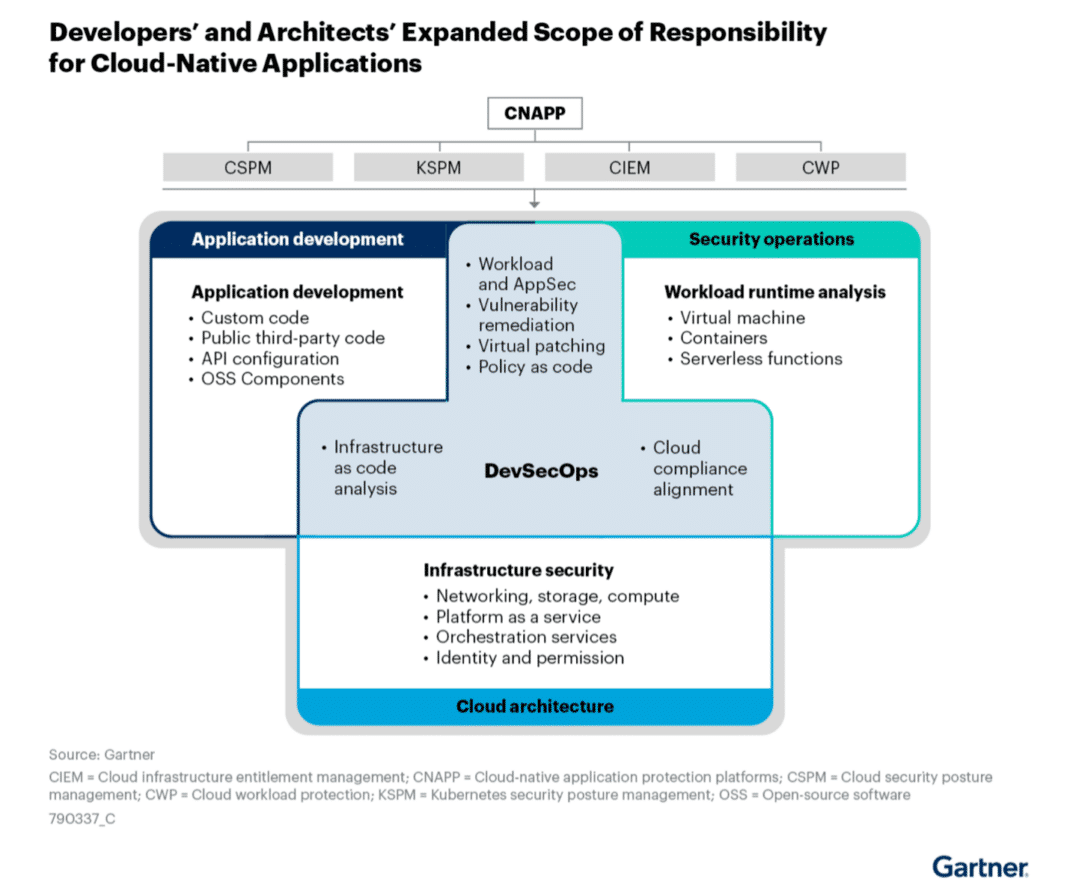
Qualys view from Gartner CNAPP report
This is our vision from the report:
1. Comprehensive vision and context
The appeal of CNAPP solutions has risen mainly because of their promise of improved visibility. In many cases, it is the CTO and DevOps teams that initially purchase the CNAPP solution for this goal. However, it is important that this insight is accompanied by context around vulnerabilities and assets, which is a must for any chief information security officer (CISO).
“Prioritize comprehensive, unified CNAPP software that provides a broad range of capabilities with the necessary breadth and depth of functionality to integrate seamlessly across the entire development ecosystem and cloud platform environment.”
– Gartner 2024 Market Guide for Cloud-Native Application Protection Platforms
Qualys TotalCloud extends unparalleled asset visibility and threat context with a unified view of all assets deployed between multi-cloud, container and on-premises. Qualys TotalCloud with FlexScan provides customers flexibility by providing multiple agent-based and agentless assessment options, including API-based, network and snapshot-based scans, allowing comprehensive cloud security coverage tailored to different workload types and requirements.

2. Manage compliance at the speed of the cloud
Compliance management is a very comprehensive and expensive endeavor that impacts DevOps, security, and beyond. A strong CNAPP should support policy-based security through a Cloud Security Posture Management (CSPM) module, allowing organizations to define and enforce security policies consistently across their cloud environments, through relevant regional and vertical mandates. Policies should cover aspects such as access control, encryption and data protection. The ability to centrally create and manage policies ensures that security practices are standardized and adhered to, reducing the risk of misconfigurations and non-compliance.
“Customers also want security and compliance testing to be seamlessly and transparently integrated into modern DevOps (referred to as DevSecOps) in a way that balances security and speed and does not unnecessarily slow digital innovation.”
– Gartner 2024 Market Guide for Cloud-Native Application Protection Platforms
The Qualys Enterprise platform has long focused on unifying compliance and policy management with vulnerability management. This is also the case with TotalCloud. With robust Cloud Security Posture Management (CSPM) and Cloud Workload Protection (CWP) as well as Cloud Infrastructure Entitlements Management (CIEM), CISOs and other security stakeholders can support and support Zero Trust business models while adhering to leading-edge compliance In the world. States.
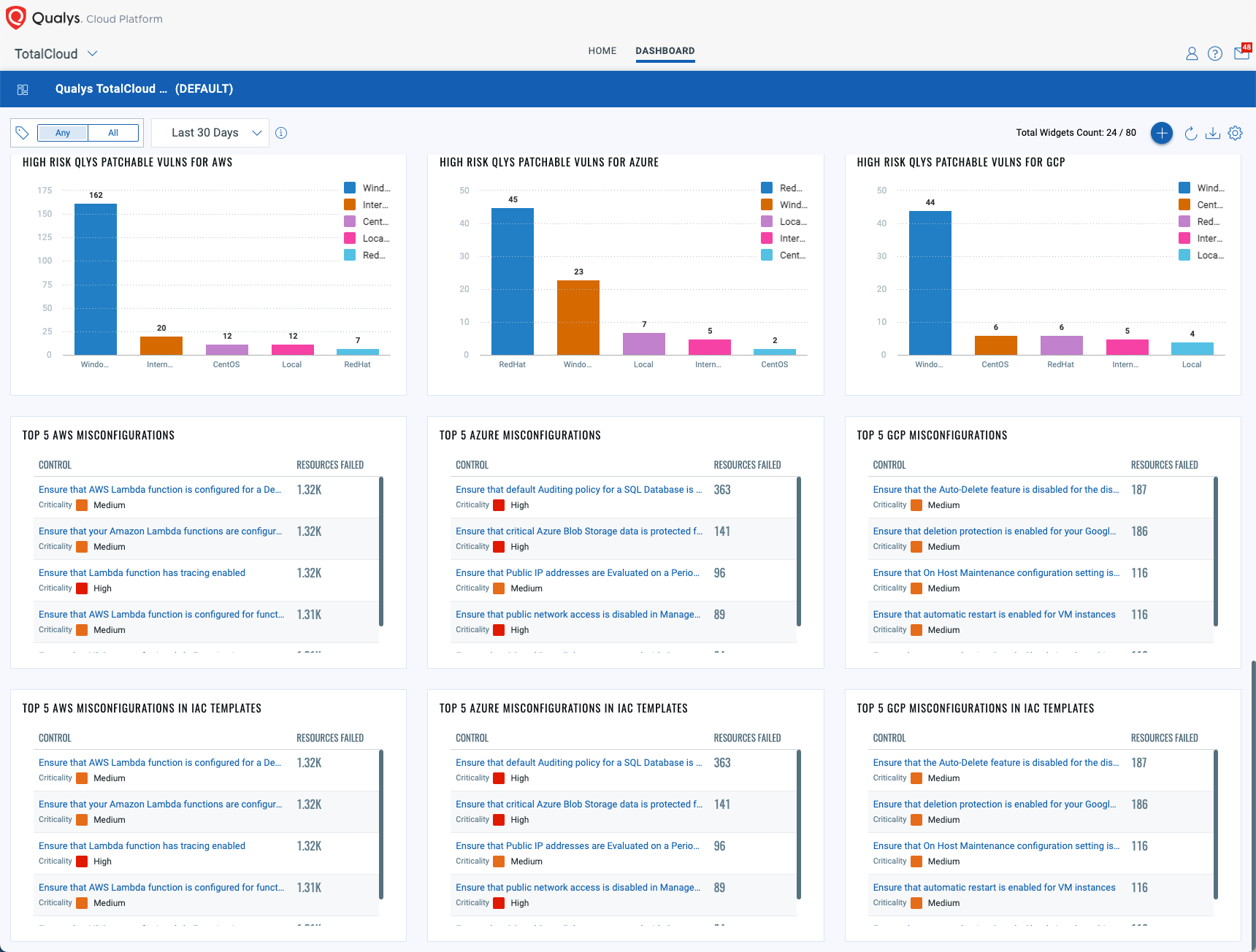
3. Ability to measure, communicate and eliminate risks based on exploitable business impact
Prioritizing risk outcomes is essential because developers and security professionals are overloaded with alerts and findings from siled and siled tools.
“Combining the need for runtime risk visibility, cloud risk visibility, and development artifact risk visibility, results in a powerful integrated set of capabilities needed for a complete CNAPP platform.”
– Gartner 2024 Market Guide for Cloud-Native Application Protection Platforms
Qualys solves this problem for organizations with TruRisk Insights. Typically, cloud security measures include point solutions that scan for misconfiguration, manage vulnerabilities, identities with excessive permissions, or active threats. TruRisk Insights correlates data from all these sources and creates a single list of prioritized issues, so you can fix the most important things first. This comprehensive approach enables organizations to bridge the gap between technical vulnerabilities and their business impact, helping to make more effective decisions and allocate resources. This helps cybersecurity teams prioritize remediation efforts by focusing on the most critical issues first, thus optimizing their efforts and reducing the average time to remediation. By integrating multiple risk factors and linking them to real-world threats like ransomware and malware, TruRisk Insights ensures organizations can address their most pressing security concerns efficiently and effectively.
4. Detect and respond to threats in real time
CNAPP's real-time threat detection and response capabilities are critical to the organization. Ideally, CNAPPs should use machine learning (ML) and AI to enhance anomaly detection and risk-based prioritization. Without an advanced learning model that can enrich the risk context with accurate, up-to-date data, threat detection and response to vulnerabilities in the cloud will likely be slow, incomplete, or missing altogether.
Qualys TotalCloud extends contextual analysis with real-time cloud threat detection and response (CDR) using deep learning AI to detect known and unknown threats in real-time without relying on traditional signature-based methods. The result is up to 40% faster mean time to detection (MTTD) and up to 6x faster mean time to process (MTTR) — everywhere.
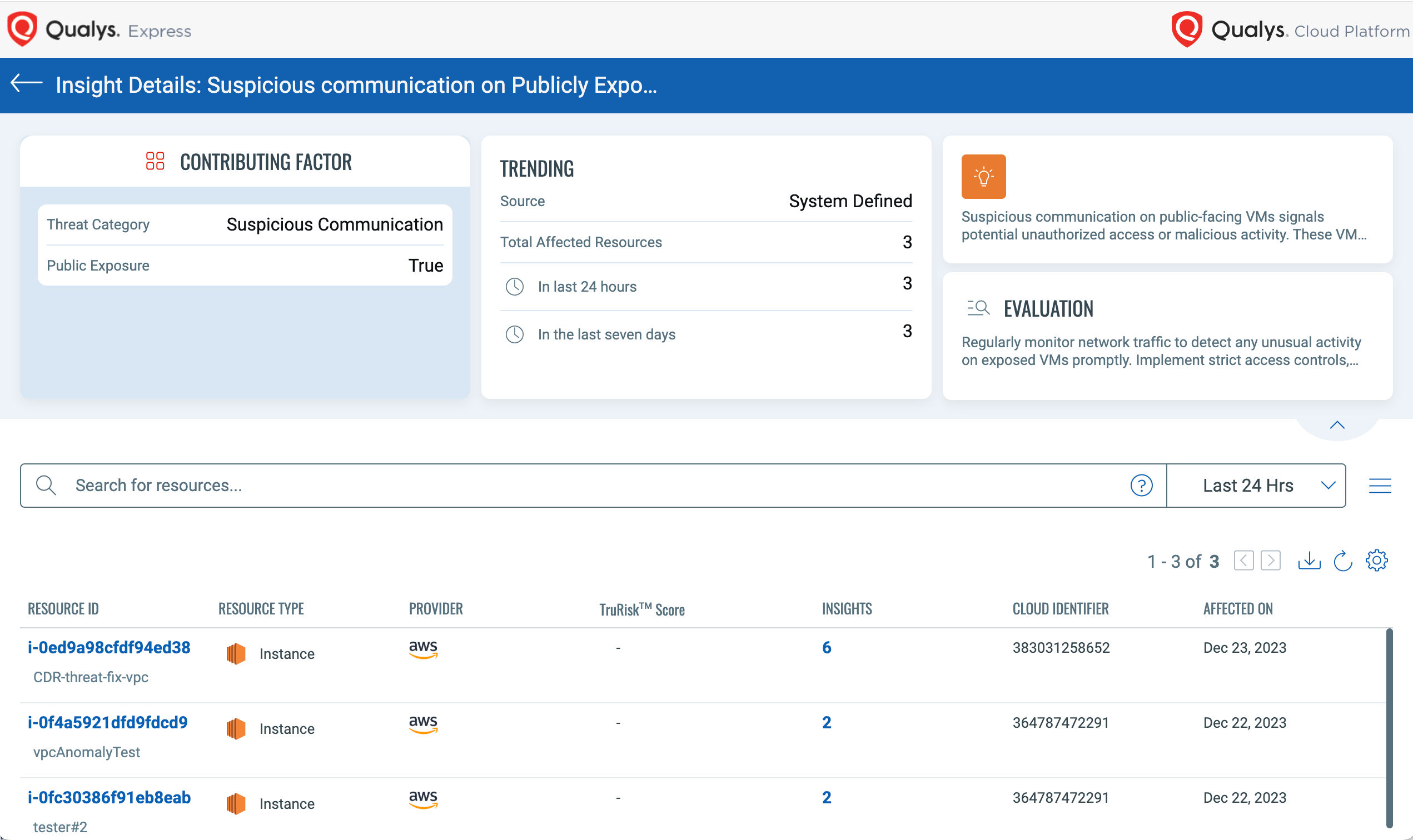
5. Seamless integration for developers
One of the challenges facing CNAPP adoption is the perception that security teams hinder the fast pace of contemporary DevOps processes. With the broader acceptance of DevSecOps frameworks, it is essential for organizations to consider CNAPPs that provide ways to unify these siled organizations.
“By consistently enforcing policies and through efforts to address risk priorities, a unified CNAPP offering should reduce developer friction and improve the developer experience.”
– Gartner 2024 Market Guide for Cloud-Native Application Protection Platforms
Qualys TotalCloud integrates seamlessly with CI/CD tools like Azure DevOps and Jenkins, allowing DevOps teams to integrate security checks into their workflow, enhancing early detection and remediation of vulnerabilities in the software development lifecycle. It supports integration with developer platforms such as GitHub, Bitbucket, and GitLab, providing real-time assessments of cloud misconfigurations and enabling developers to maintain secure and compliant cloud environments. Qualys TotalCloud provides security from development to runtime, supported by build tools, logging, Kubernetes applications, and container runtime security that supports DevOps activities to meet security needs.

At Qualys, we believe we align with the core requirements outlined in the Gartner report, recognizing that the true power of CNAPP lies in its ability to scale business operations without compromising enterprise security, and to break down silos between development and security teams. We are proud to be a represented vendor in the 2024 Gartner CNAPP Market Guide.
Learn how we can help you on your journey
If you want to dive deeper into CNAPP, download the 2024 Gartner CNAPP Market Guide, explore more about the Qualys TotalCloud platform, get your free customized TotalCloud TruRisk Insights report, read our FAQs, or talk to a Qualys TotalCloud CNAPP expert.
Gartner, Market Guide for Cloud-Native Application Protection Platforms, Dale Cobbin, Charlie Winkless, Neil Macdonald, Esraa Eltahawy, July 22, 2024
GARTNER is a registered trademark and service mark of Gartner, Inc. and/or its affiliates in the United States and internationally, and is used here with permission. All rights reserved.
Gartner does not endorse any vendor, product or service mentioned in its research publications and does not advise technology users to select only those vendors with the highest ratings or other rating. Gartner research publications consist of the opinions of Gartner's research organization and should not be construed as statements of fact. Gartner disclaims all warranties, express or implied, with respect to this research, including any warranties of merchantability or fitness for a particular purpose.



